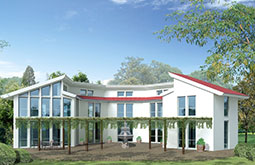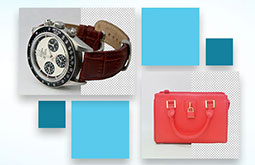20 Proven Photo Manipulation Tips for Beginners
What is Photo Manipulation
Photo manipulation is the process of altering or transforming an image using various editing techniques. In other terms, it means enhancing a photograph to achieve a desired effect or appearance. Using photo editing software, you can add elements, remove unwanted objects, enhance the color, brightness, and contrast, change the shape, combine numerous images, and much more.
It may sound easy but manipulating the picture is a tough job. To manipulate photos aesthetically and accurately, you need to understand a few things and that’s what you will get to know in this article.

With the proven photo manipulation tips discussed here, you’ll gain spectacular results with your images.
-
Browse through all relevant tutorials and resources
To gain comprehensive command over techniques of image manipulation, you need to browse through all tutorials meant for beginner to advanced users carefully.
Relying on a handful of tutorials can be fatal as your skills won’t develop comprehensively. So, know various software, tools, technical intricacies, and particular techniques related to lighting, etc.
-
Invest in stock photography to hone your skill
Ordinary images available for free may not have that cutting-edge feature that can improve your manipulation tactics. So, try using stock photographs.
These photographs are often captured by seasoned artists who take care of the lighting, shades, shadows, toning, etc. in the images. Apply digital brushes on thematic stock images to gain spectacular results.
-
Learn about seamless cropping and retouching of image edges
In order to contrast the subject of one image against another, you need to seamlessly crop without any jagged edges. Learn to crop with newer tools for distortion free edges. Often, overuse of magic wand tool and feathering techniques may not yield the desired outcomes and the final image may appear unpleasant to eyes. For hard to crop regions like subject’s hair, you need to apply cropping followed by feathering or smudging. Next, you should paint over the cropped parts with matching colour to help the subject seamlessly blend in the new backdrop.
-
Invest time in prepping up the background
The appeal of a manipulated image gets enhanced when you work with backgrounds that naturally complement the image’s subject. Background already available may not serve the exact purpose. This is where various backgrounds ideas can help for manipulating photos. You should start preparing your own backdrops in which the manipulated subject can placed in visually enchanting manner.
-
Be careful with tones
You need to be careful with the image’s tone just like all best photo editing companies. A warm tone must not be placed alongside a subdued hue. The colour balancing, contrast, lighting exposure, curves and other tweaking should be exactly done for the subjects on the canvas. Toning the manipulated image can be carried out at later stage of refining. You can also blend the final picture with the layer of colour which you desire for the background. Color manipulation in Photoshop tools is an art and you should master it.
-
Try combing images if required
Sometimes, it is difficult to achieve the desired effect on a single picture. In that case, combining multiple pictures can help.
Combing different photographs will enable you to include the perfect elements in your final picture. It can also help you to add stunning effects. So, check your private library or stock websites while looking for the images.
-
You may or may not maintain proportions
It’s completely your choice whether or not to maintain proportions. However, make sure that even if you change the proportions, it must look natural.
If you’re trying to manipulate an image related to the fantasy genre, you don’t have to worry about the right proportions. However, if the work is related to commercials where it needs to be realistic, then it’s better not to play with the proportion.
-
Image resolution is the decisive factor
The pixels that constitute the image can be thought of as the basic elements which have to be manipulated to give the desired outcome to the image medium. If an analogy can be drawn, the pixels would be comparable with paint tubes which the artist uses profusely to give richness to his portrait.
Any connoisseur of art would proclaim that it is not wise to be stingy with the raw materials that form the fundamental of the artwork. This holds true in the case of photoshop manipulation too.
Pixels in the image have to endure several forces related to their stretching, squashing, skewing, and general abuse. This implies that if the number of pixels in the image is more, the better it would be to work with them considering the flexibility you can enjoy in getting to the desired result.
So, what’s the ideal number of pixels required for the stunning outcome? The commonly accepted practice is to carry out your work with an image size that is magnified at 150-200% of the actual size of the manipulated outcome.
Once you are done with retouching, you can get the final image resampled. It is critical to learn about the medium beforehand wherein the finished image is going to be delivered.
If the final image is meant for publication through print media, the resolution has to be significantly higher than what you would use for screen displays. 300 dpi is the standard resolution requirement for the majority of print works. For displaying on computer or handheld screens, a resolution of 72 dpi would suffice. This difference has to be kept in perspective.
If you have ignored the resolution aspect of the image and had started working with low-resolution pictures, the finished product would suffer from distortion, pixilation, or blurriness.
The problem gets more complex when you use images from several varying sources. That’s why the images which are chosen for the manipulation project must have resolutions that correspond to each other.
If this is not possible, then choose the image with the lowest resolution and then try to scale down the resolutions of other images to measure up to the benchmark image’s resolution.
-
Shadowing and highlighting should be done before merging layers
The manipulated image’s dimensions are determined by proper exposure to light. The reflections, shades, highlights, and shadows should be congruent with the source of light.
The shadow must be directed in the direction in which light is focused. For this, you have to segregate the image’s light sources. Alternately, you can place your sources at strategic locations.
Next, go about rendering the shadows carefully. Anything and everything that comes in the way of light should be properly adjusted. For instance, if the light is incident on a mirror, it would ricochet according to the laws of science. If the source of light is obstructed by something, the same should cast a shadow of adequate length.
-
Keeping image manipulation in perspective
Some of the characteristics of a poorly manipulate photo are distortions or imbalances in lighting exposure, shadow effects and improper scaling. In some cases, you may intentionally exaggerate the size of image to answer to the demand posed by the requirement.
If, however, the scale of the image is not consistent with the surroundings, you would feel that it appears as an eyesore. The strange feeling of something being amiss lurks palpably. If this is the case, the viewer would intuitively understand that the image is visually out of proportion and its credibility as an object of vision is dubious.
In order to ensure that the constituting elements of the manipulated image are consistent with the desired scale is to visualize from the viewpoint of the image. Mark out the horizon and those points where the image boundaries start getting blurred. Now ensure that the image elements align themselves with these cynosures. Normally, these advanced concepts are invoked when illustrating or drawing, but they can be effectively used in the case of image manipulation also for enhanced results. The following tutorials and guidelines would help you form a clear idea of working with perspective in image manipulation in case you are not aware of the same.
-
Never lose sight of the focus
Your manipulated image’s focus should be evident and must stand out in clear contrast with the objects surrounding it. The image’s sharpness can also be helpful for creating an effect of either blending in our out with the surroundings. The same should be harnessed critically to create seamless blending and transitioning effects. The appeal of the fading effect can be heightened with the use of feathering available in selection tools section.
-
Avoid over smudging or blurring
In order to pull off the desired effect, you can apply the smudge tool. Smudging can help you get rid of unwanted noise from the manipulated picture and also helps in blending the image with other artistic aspects easily. Refrain from using the noise reduction tools available as in-built or plug-in with the software you use for editing photos. The pixel flow gets disturbed by such deliberate effect resulting in edge destruction and unwanted selective blurring. Proper smudging helps you in controlling the pixel flow by helping in pulling off the right effect with effortless noise elimination. If the final image is giving a feel of shallowness and lack of detailing, you can counter this by painting over the picture with a fade out brush. The strokes of the brush would be most effective with visible highlights and visible shadows options.
-
Dodge and burn tools
It is not mandatory that a photo manipulated perfectly would have to appear photorealistic. Stylizing an image would make it appear in embellished and captivating form. The attraction quotient is imparted by additional colors and hues of vibrant nature, highlights that are inherently bright, shadow areas accentuated with depth. The alluring look that you pull off through manipulation of image result in buoyant mood where your imagination goes wild. The stylized look can be pulled off with ease using the dodge and burn technique wherein the image is manipulated by hand. Each artist who engages in photo manipulation has his own preferred your imagination goes wild. The stylized look can be pulled off with ease using the dodge and burn technique wherein the image is manipulated by hand. Each artist who engage in photo manipulation has his own preferred Photoshop features. However, the technique popular with all is the usage of a layer that has 50% gray filling which is made to correspond the Overlay blending mode. The filling of gray is made purely invisible and the marks left by Dodge and Burn Tools would catch your sight.
-
Enhance the feel of manipulated image through proper texturing
The manipulated image’s mood can be depicted with right texture. You can apply texture to the entire image or a selected portion. Always decide the suitability of texture to the image at hand before applying.
In order to showcase depth while detailing an image during manipulation similar to that of real life, you have to add textures to the project for swifter results. The expeditious way to pull off depth is to use textures which have been borrowed from real life situations. The use of texture saves you the tedium of having to assiduously paint in each nook and corner of the material being depicted in the subject of image and the outcome is convincing too. In order to accomplish the desired and standard level of depth detailing, it is compulsory to use textures of high quality. This exercise renders the surface of the manipulated images credible and closer to real life.
-
Usage of custom brushes
Similar to that of real life textures, Photoshop's brushes too can quickly and effectively be deployed for adding realistic effects to the image purported to be manipulated. The amount of control you can exercise is also appreciable. The best in the pact are brushes that come bundled up with Photoshop. But the effects produced by these brushes are in common knowledge and as such limits the scope of their application particularly from the perspective of securing effects resembling hand painting. In order to steer clear of the limitations posed, custom brushes can prove to be of real help. You can impart special effects to the image in desirable and modulated manner y creating your own unique brushes. An example is to add Photoshop's effects of weathering to the metallic piece through creation of rusting and scratches
-
Employ automated actions
You can also use ‘Actions’ to actuate monotonous tasks requiring little qualitative intervention. Photoshop actions can prove valuable in expediting the workflow through automation of tasks which are repetitive in nature and consumes significant time. The actions can also be applied in another context. Actions can be carefully utilized for creation of highly complex effect in much lesser time compared to what it would take for manual creation of that effect. The functioning of filters and operation of layers can be recorded in adept manner, you can get the actions to perform and complete the desired effect in a matter of time. This would save your time and energy for devoting to other important tasks which would ask for your personal mediation.
-
Consciously use the transform and warp options
When you are manipulating a photo, you are actually involved in transforming a photographic component into something radically or slightly different. In Photoshop, you can exercise a number of options for accomplishing this task. Each option or technique comes accompanies with its own unique array of advantages and shortcomings. This makes it essential to master optimum number of such techniques so that you can versatility use them as per the demand of the situation and can make informed and conscious decision regarding which feature complements a given manipulation need optimally. You can put into use the basic transformations, puppet or custom warps and liquify options for altering the fundamental shape of a component.
-
Put into use the graphics tablet
If you are still accustomed to working with track pad or mouse for exercising various options in Photoshop, you can consider the usage of a more advanced input device like the graphics tablet. You may find these tablets put in active use for painting and drawing on the digital canvas. But, the input devices can prove to be of immense help in case of photo manipulation also. Each tool in Photoshop which is responsive to the brush engine also exhibits response to pressure inputs induced by the graphics tablet. Some of the common tools are painted masks, burn, dodge, clone stamp etc.
When working with a mouse, you can exercise only two predefined pressure levels by pressing the button down or releasing it. It is a classic example of binary input. In contrast, a high quality graphics tablet prides itself of sensitivity to 2048 types of pressure levels. You can input sensitivities for pen angle and speed. In some models, you can add sensitivity for barrel rotation also. Once you become familiar and adept with the usage of advanced input device, you would feel that you have been wasting your time and talent till date with mouse.
-
Always remain inspired and keep on practicing!
You cannot aspire to become the master of photo manipulation overnight. Like every art, you would need rigorous practice and dedicated efforts to gain expertise of the advanced skills needed to produce a masterpiece.
In order to feel motivated and continue with your efforts to learn the tricks of photo manipulation, you should maintain an inspiration folder wherein you can collect classic examples of manipulated images and digital artworks which are awe-inspiring.
-
Seek guidance of veterans and experts
Before starting to edit, stay updated with the photoshop tools list. Also, you can use an online platform to connect with experts or browse resources to learn from the photo manipulation services providers previous work examples and experiences of others.
Conclusion
Closely monitor the manipulated images created by others and try to figure out the stellar points and the discrepancies. Mentally map the tools used to bring about the results. Apply them on your canvas.
The aforesaid image manipulation ideas would help you to optimally bring out the latent artistic capabilities. You can be a great photo manipulator by practicing these tips over time. Also, try to stay updated with the industry trends or seek mentorship from industry experts when necessary.




